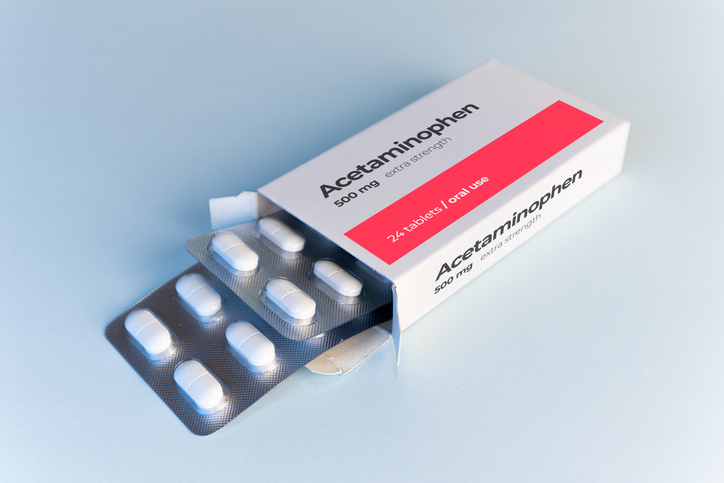Dr. Shanthini Kasturi on Enhancing Care for Lupus Patients
By Rob Dillard - Last Updated: April 27, 2023DocWire News recently spoke with Shanthini Kasturi, MD, MS, Attending Rheumatologist, Tufts Medical Center; Assistant Professor of Medicine, Tufts University School of Medicine and a medical advisor to CreakyJoints about the results of a study about why increasing physician awareness of patients’ desire to include PROMs as part of their clinical care and the benefits of doing so with data driven approaches is critical to overcoming this barrier to implementation.
DocWire News: Can you provide us with some professional background on yourself?
Dr. Shanthini Kasturi: Yeah, sure. So I am a rheumatologist and health services researcher at Tufts Medical Center in Boston. And my research has really focused on measuring patient-reported outcomes and developing and implementing interventions to improve these outcomes in patients with rheumatic disease. And I focused a lot really on lupus.
What are the main challenges faced by patients with lupus?
So patients with lupus face a lot of challenges. Fortunately, we’ve had a lot of advances in lupus care recently with a lot of new drugs being approved. So mortality is going down and morbidity, renal damage is all going down with these new therapeutic options. But I think one of the main challenges patients still face is that they suffer from poor quality of life. And that’s true when their disease is active, and it’s true when their lupus is even pretty well-controlled. So, just getting through the day can be difficult for lupus patients. And this is often something that doctors don’t talk about in detail during medical visits because we’re trying to deal with so many other things. You’re trying to manage the disease activity, you talk about medications, get everything else under control. So some of the issues that are most important to patients, whether that’s the fatigue that prevents them from getting to work or taking care of family members or the brain fog that they’re feeling, they may go unaddressed. And so, there can be a disconnect. And I think that this is a problem that many patients face.
You were an investigator on a study that was recently published in Rheumatology. Talk to us about that study.
Yeah. So, given the disconnect that I just described between patients and doctors and some of their perspectives and priorities, our hypothesis was that if you could introduce a standardized objective measure of the patient perspective in visits, that perhaps you could bridge this disconnect. And so, one of the tools to do this is something called patient-reported outcome measures or PROMS. And we use PROMS quite extensively in research. They’re also part of quality metrics, more and more in rheumatology and in medicine in general, but they’re not routinely incorporated as part of clinical care. And there are a variety of reasons for that. So our study, the aim of the study was really to see if we incorporate these kinds of surveys as a routine part of clinical care, can that bridge this disconnect and highlight some of the needs of patients and facilitate communication and basically, enhance care for the patients.
How was the study conducted, and what were the findings?
So I’ll describe how this study was conducted. So this was a prospective cohort study. We enrolled patients at two academic medical centers, one in Boston and one in New York. And essentially, we had them complete these surveys in domains of interest to patients. So lupus patients had previously highlighted areas that are important to them. Fatigue is one of them, pain, physical function.
So the enrolled patients would complete these surveys before their medical visits. And they did so using the ArthritisPower research registry, either the web-based version of that or the mobile health app. And they would be able to view their scores, and then their doctors would get their score reports before the visit. And patients and doctors had the opportunity to talk about the surveys or not. It was really left to their discretion. We didn’t want to interfere with that too much. And then, at the end of visits, patients and doctors, both completed surveys, just sharing with us how the surveys played a role in their visits. And at the end of the study, we interviewed doctors, a subset of doctors and patients to get a sense of what this was like and how this impacted their care.
So that was an overview of how we did the study. And we had 105 patients enroll. They had 17 different rheumatologists, so a broad variety of different methods, I would say, just approaches with that many different rheumatologists. And we found that the patients completed the PROMS in the vast majority of their encounters. So, they were followed for two visits after enrollment and 86% of the time, they completed the surveys. And we found that the patients really found the surveys very useful and beneficial to communication.
So, a majority of the time in those post-visit surveys, they said that the PROMS were helpful, and they said quite a bit or very much so, in over 50% of the encounters. And the reasons when we dug into it in the interviews and in the focus groups had to do with validating their perspective and helping them reflect on their experience with lupus, but also, bolstering their relationship with their doctors. They felt like doing these surveys helped them communicate. And so, that was where they were getting benefit.
Interestingly, and this is the part that I found maybe not surprising, but interesting nonetheless, was doctors didn’t feel the same way. They found them useful, but not nearly as often as patients. So, 17% to 20% of the time, doctors were saying these surveys were useful to the encounter or helpful to communication. So there is a real difference in perspective of what constitutes patient-centered communication from the doctor side and the patient side. And so, I think the study highlighted that.
We also found that there was some improvement in patient satisfaction, small, but statistically significant, and then, increased patient activation in those who were completing these surveys and that sort of a measure of patient engagement. So those were exploratory findings, but very interesting, nonetheless, and could be potentially important in larger studies, if they’re born out in larger studies.
What are the clinical implications of these findings?
So I think the main things are given how much patients felt that these surveys were useful, just the act of doing the survey gave them some benefit, whether or not doctors talked about it. I think that’s one important thing. And that’s essentially a reframing of value of these surveys for doctors. Doctors have often said, “Well, these surveys aren’t that helpful. They don’t give me new information. I’m getting at this information anyway.” But I think what we often don’t realize is that just doing the surveys is valuable to patients because of the reflection that it provides and the validation that someone’s asking about these things and that someone care, someone wants to know. So, I think that’s one important piece of it.
And then the other piece is that doctors and patients still have very different perspectives on what is patient-centered communication. The patients really prioritize these surveys and the doctors say, “Oh, I’m getting at that anyway. I don’t necessarily need a survey to tell me what’s going on.” But there’s value in it. The patients are telling us that. And I think that’s an important implication.
So I would say, overall, I think the important thing is to get the message out to physicians that patients want to do this as part of their care. They want to be asked about these questions. They want to be asked how their quality of life is, how their function is, and they want us to talk about it, if we can, during the visits. But even if we don’t have time to talk about it, at least ask and give them that opportunity to bring it up because that can really engage them in their care and feel like they have a stronger relationship. So those are important things right there, but downstream, those can have impacts on medication and treatment adherence, overall patient satisfaction with the healthcare and then, downstream health outcomes, so a lot of important things that can come from this.
Any closing thoughts?
I think, basically, I really feel like we should be incorporating the patient perspective into our clinical visits in a standardized way. And these tools, patient-reported outcome measures, give us an opportunity to do that. So, I think the more we can do that, the better we’ll be able to give patients a voice in their care.







 © 2025 Mashup Media, LLC, a Formedics Property. All Rights Reserved.
© 2025 Mashup Media, LLC, a Formedics Property. All Rights Reserved.